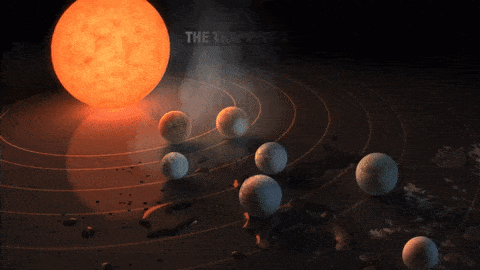
Uranus & Neptune
Quiz
•
Science
•
8th - 12th Grade
•
Practice Problem
•
Medium
+2
Standards-aligned

Clint Sandford
Used 154+ times
FREE Resource
20 questions
Show all answers
1.
MULTIPLE CHOICE QUESTION
45 sec • 1 pt

The spin of Uranus' rotational axis is almost ___ to the ecliptic.
perpendicular
parallel
upside down
directly aligned
2.
MULTIPLE CHOICE QUESTION
45 sec • 1 pt

The gas element ___ is responsible for the overall colors of both Uranus & Neptune.
methane
hydrogen
helium
nitrogen
Tags
NGSS.MS-PS1-1
3.
MULTIPLE CHOICE QUESTION
45 sec • 1 pt

The rings of Uranus were first discovered by using this method in 1977.
stellar occultation
eclipsing moons
stellar parallax
telescopic zoom in
4.
MULTIPLE CHOICE QUESTION
1 min • 1 pt

Uranus' orbital period is 84 years. Uranus has orbited the Sun ___ since its discovery in 1781.
once
twice
just over five times
just over two & a half times
Tags
NGSS.MS-ESS1-2
5.
MULTIPLE CHOICE QUESTION
1 min • 1 pt

Uranus & Neptune are also known as the "ice giants" due to
their icy moons.
the very cold atmospheres of each planet.
their mantle composition.
the lack of a rocky core.
6.
MULTIPLE CHOICE QUESTION
1 min • 1 pt

The "sideways" orientation of Uranus' axis gives the planet
extreme seasonal effects.
a very strong magnetic field.
its mostly blue color.
its second-most extensive ring system.
7.
MULTIPLE CHOICE QUESTION
1 min • 1 pt

The atmosphere of Uranus appeared to be ___ - when Voyager II flew by in 1986.
very active like Jupiter's
almost non-existent
very bland due to seasonal variations
incredibly stormy
Create a free account and access millions of resources
Create resources
Host any resource
Get auto-graded reports

Continue with Google

Continue with Email

Continue with Classlink

Continue with Clever
or continue with

Microsoft
%20(1).png)
Apple
Others
By signing up, you agree to our Terms of Service & Privacy Policy
Already have an account?
Similar Resources on Wayground

18 questions
Sources of Energy
Quiz
•
7th - 10th Grade

17 questions
Reflection and Mirrors
Quiz
•
8th Grade

20 questions
Winds,Storms and Cyclones
Quiz
•
6th - 12th Grade

15 questions
Models of the Universe
Quiz
•
11th Grade

20 questions
Unit 2: Forces and Motion (quiz#1)
Quiz
•
8th Grade

17 questions
Matter and its Nature
Quiz
•
10th Grade - University

20 questions
Endogenic process
Quiz
•
11th Grade

18 questions
Unit 3: Cellular Transport Test
Quiz
•
11th Grade - University
Popular Resources on Wayground

10 questions
Honoring the Significance of Veterans Day
Interactive video
•
6th - 10th Grade

10 questions
Exploring Veterans Day: Facts and Celebrations for Kids
Interactive video
•
6th - 10th Grade

19 questions
Veterans Day
Quiz
•
5th Grade

25 questions
Multiplication Facts
Quiz
•
5th Grade

15 questions
Circuits, Light Energy, and Forces
Quiz
•
5th Grade

6 questions
FOREST Self-Discipline
Lesson
•
1st - 5th Grade

7 questions
Veteran's Day
Interactive video
•
3rd Grade

20 questions
Weekly Prefix check #2
Quiz
•
4th - 7th Grade
Discover more resources for Science

20 questions
Physical and Chemical Changes
Quiz
•
8th Grade

10 questions
Exploring Newton's Laws of Motion
Interactive video
•
6th - 10th Grade

20 questions
Conduction, Convection, & Radiation
Quiz
•
6th - 8th Grade

15 questions
Protein synthesis
Quiz
•
9th Grade

11 questions
8.6C Newton's Laws of Motion
Quiz
•
8th Grade

10 questions
Exploring the Electromagnetic Spectrum
Interactive video
•
6th - 8th Grade

18 questions
Ionic and Covalent Bonds
Quiz
•
7th - 8th Grade

19 questions
Waves
Lesson
•
6th - 8th Grade



